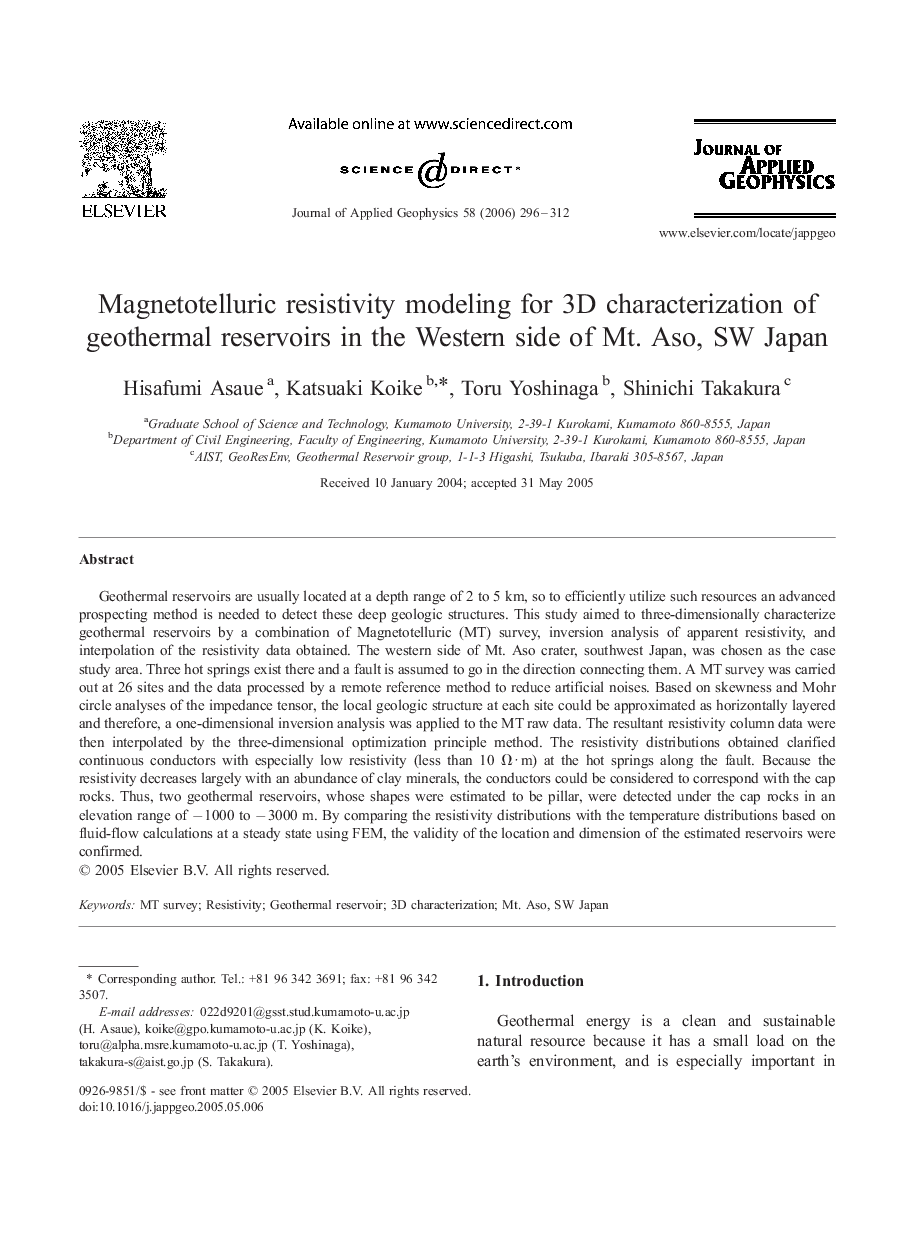| Article ID | Journal | Published Year | Pages | File Type |
|---|---|---|---|---|
| 4741290 | Journal of Applied Geophysics | 2006 | 17 Pages |
Geothermal reservoirs are usually located at a depth range of 2 to 5 km, so to efficiently utilize such resources an advanced prospecting method is needed to detect these deep geologic structures. This study aimed to three-dimensionally characterize geothermal reservoirs by a combination of Magnetotelluric (MT) survey, inversion analysis of apparent resistivity, and interpolation of the resistivity data obtained. The western side of Mt. Aso crater, southwest Japan, was chosen as the case study area. Three hot springs exist there and a fault is assumed to go in the direction connecting them. A MT survey was carried out at 26 sites and the data processed by a remote reference method to reduce artificial noises. Based on skewness and Mohr circle analyses of the impedance tensor, the local geologic structure at each site could be approximated as horizontally layered and therefore, a one-dimensional inversion analysis was applied to the MT raw data. The resultant resistivity column data were then interpolated by the three-dimensional optimization principle method. The resistivity distributions obtained clarified continuous conductors with especially low resistivity (less than 10 Ω·m) at the hot springs along the fault. Because the resistivity decreases largely with an abundance of clay minerals, the conductors could be considered to correspond with the cap rocks. Thus, two geothermal reservoirs, whose shapes were estimated to be pillar, were detected under the cap rocks in an elevation range of − 1000 to − 3000 m. By comparing the resistivity distributions with the temperature distributions based on fluid-flow calculations at a steady state using FEM, the validity of the location and dimension of the estimated reservoirs were confirmed.
